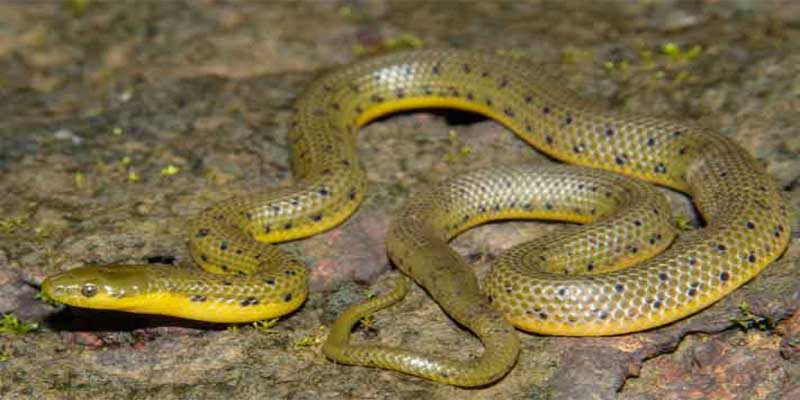

A new species of burrowing snake, Rhabdops aquaticus, has been described from the northern Western Ghats, marking a significant addition to India's endemic reptilian biodiversity. This discovery is the result of a long-term collaborative study by a team of Indian and international scientists from multiple institutions, including the National Centre for Biological Sciences (NCBS), Bangalore; the Natural History Museum (NHM), London; Centre for Ecological Sciences (CES), Indian Institute of Science, Bangalore; Indian Herpetological Society (IHS), Pune; Wildlife Institute of India (WII), Dehradun; Kerala Forest Research Institute (KFRI), Peechi; and the College of Veterinary Science (CVS), Pookode.
The research team, led by Dr. Varad Giri of NCBS and comprising Dr. David Gower (NHM), Dr. V. Deepak (CES), Ashok Captain (IHS/BNHS), Dr. Abhijit Das (WII), Sandeep Das and K.P. Rajkumar (KFRI), and R.L. Rathish (CVS), carried out an intensive study over eight years. Their efforts culminated in the identification and description of this new species, which has now been formally published in the international peer-reviewed journal Zootaxa.
Rhabdops aquaticus, commonly referred to as the Aquatic Rhabdops, had long been misidentified as the Olive Forest Snake (Rhabdops olivaceus) due to overlapping physical characteristics and similar habitat range. However, through detailed morphological and genetic analysis of both historical specimens and freshly collected samples from various parts of the Western Ghats, the team was able to establish that the population in the northern Western Ghats represents a distinct species.
This newly described species is closely associated with freshwater habitats. Adults are typically found in forest streams, while juveniles are often observed in waterlogged conditions on rocky plateaus. The species is nocturnal and exhibits aquatic behaviour, foraging underwater like that of water snakes. Interestingly, Rhabdops aquaticus exhibits notable ontogenic colour variation, as juveniles and adults differ in appearance, which may reflect differing habitat preferences during their respective life stages.
The Aquatic Rhabdops is medium-sized, with the largest known individual measuring approximately 950 mm in length. It is non-venomous and currently known from a limited number of locations in Maharashtra, Goa, and northern Karnataka. The Olive Forest Snake, its closest relative, was first described in 1863 from Mananthavady in Kerala's Wayanad district and remains one of the rarer snake species in India. The Bi-coloured Forest Snake (Rhabdops bicolour), the only other species in the genus, is found in a few localities in northeastern India.
The discovery of Rhabdops aquaticus not only sheds light on the underexplored herpetofaunal diversity of the northern Western Ghats but also emphasises the importance of integrative taxonomy—combining molecular, ecological, and morphological data—for accurate species identification. With habitat degradation and environmental pressures threatening freshwater ecosystems in India, the identification and documentation of such endemic species is vital for targeted conservation efforts.
This finding highlights the crucial role of sustained field research and institutional collaboration in uncovering and conserving India's hidden biodiversity, particularly in the ecologically sensitive Western Ghats.
Published on: Tuesday, September 19, 2017